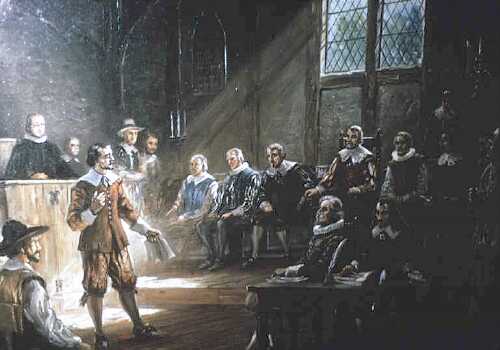
The House of Burgesses was the name given to the lower house of the first elected legislative assembly in the New World. The name, House of Burgesses, over time came to represent the entire official legislative body of the Colony of Virginia, and later, after the American Revolution, the General Assembly of the Commonwealth of Virginia.
The Virginia House of Burgesses was formed initially as part of a series of government reforms at Jamestown, established in 1607. Owned by the Virginia Company of London, the colony based at Jamestown had grown to only approximately 1,000 colonists in its first 12 years, so the Virginia Company made changes that the company hoped would make the colony more profitable. The Virginia Company established English Common Law, encouraged private investment from Jamestown settlers which allowed them to own their own land rather than simply being sharecroppers, and created a legislative body similar to the British Parliament that would meet once annually.
|
Prompted by the Virginia Company, colonial governor Sir George Yeardley helped facilitate elections of representatives, called "burgesses", to this new legislative body that would come from eleven Virginia boroughs adjacent to the James River, along with eleven additional burgesses.
The first meeting of the House of Burgesses occurred on July 30, 1619 at Jamestown. The House of Burgesses became the first elected, non-Native American, representative legislative body in the New World and ultimately became the foundation for self-government in the American Colonies and, eventually, the United States of America.